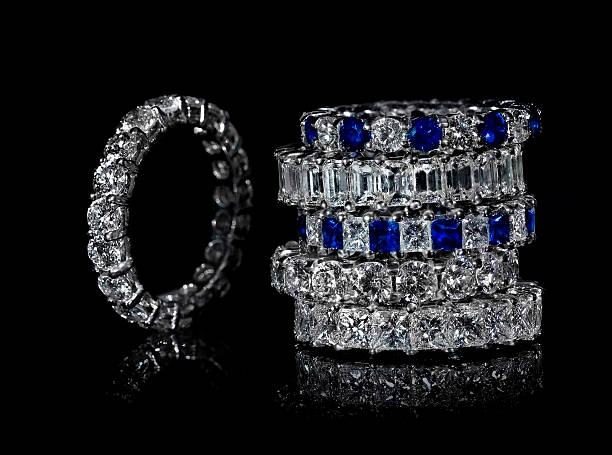What To Know About Diamond Ratings All Entries

Part of buying diamonds involves finding out diamond ratings, based on a system created by the Geomological Institute of America (GIA). This set of international standards scientifically measures a gem's clarity, color, cut, and carat weight. These ratings given by gemologists contribute to a diamond's market value. Here's a deeper look into what these ratings mean.
GIA Rating System
Diamonds come in various sizes, shapes, colors, and weights, so determining a gem's value requires evaluating multiple factors. Purity is a major concern among serious jewelry investors, especially when it comes to diamonds. The polish on the stone further contributes to appearance and value. The term "inclusions" refers to flaws on the gem. Here's a breakdown of how the 4C's are rated by GIA.
Clarity - The GIA clarity scale is broken down into the following sections. "Flawless" is the highest quality and "included" is the lowest quality:
- Flawless
- Internally flawless
- Very very slightly included (VVS1, VVS2)
- Very slightly included (VS1, VS2)
- Slightly included (SI1, SI2)
- Included (I1, I2, I3)
Color - The most valuable diamonds in terms of the GIA color scale are colorless, due to translucency. Getting a "D" rating means the gemstone is 100% colorless while "E" and "F" ratings look generally translucent with slight traces of colors, but invisible to the human eye. The "G" through "J" ratings move toward a yellowish color. From "K" through "M" are considered "faint yellow," then the rest of the scale through "Z" moves toward darker yellow. Here are the sections that make up the scale:
- Colorless (D, E, F)
- Near colorless (G, H, I, J)
- Faint (K, L, M)
- Very light (N, O, P, Q, R)
- Light (S, T, U, V, W, X, Y, Z)
Cut - The manner in which a diamond is cut contributes tremendously to the artistic appearance of the gemstone. Experienced custom jewelry designers are high in demand, as precision cuts create amazing brilliance and definition. The reason the cut is so important is because light reflects off angles then returns to the eye. Seven key grading factors include brightness, fire, scintillation (sparkle), weight ratio, durability, polish, and symmetry. The scale of cut grades consists of the following:
- Excellent (EX) - displays brilliance, sparkle with balanced bright and dark areas
- Very Good (VG) - similar characteristics as EX with more darkness in the center
- Good (G) - less scintillation, more darkness
- Fair (F) - not much brilliance or sparkle
- Poor (P) - similar to F but with a black or washed out center
Carat - The most important factor in pricing a diamond is its weight, which is measured with precision, in carats. If a piece of jewely has multiple diamonds, carat total weight (CTTW) is the combined weight of all the gemstones. Carats can be subdivided into 100 points, which generates decimals, such as 1.05 carat weight. One carat equals 0.2 grams.
Why Diamond Ratings Matter
Memorizing the 4Cs of diamond ratings will help you understand diamond pricing better. While there are unethical jewelers that might use grading in a misleading manner, GIA is respected around the world, so it's crucial to work with its members to get an objective report. Once you become aware there are all kinds of fake diamonds in the world pitched as authentic, you'll want to deal with a certified gemologist.
Conclusion
Developing an understanding and appeciation for GIA-based diamond ratings will set you on a path to choosing jewelry carefully and dilligently. Contact us at Ralph Mueller & Associates to let us know your interest in diamonds so we can help you reach your goals. We are certified GIA members serving the Grand Canyon tate.